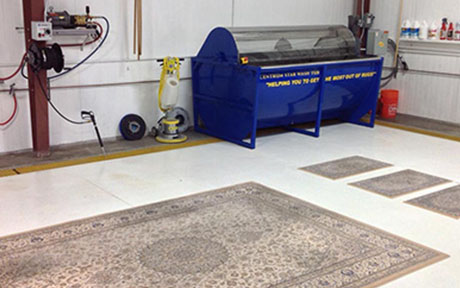How to dry a wet rug
Accidents happen. Maybe a pipe burst, or perhaps a heavy rainstorm left you dealing with a soaked rug. Whatever the cause, a wet rug can be a real headache. Not only can it lead to unpleasant odors, but it can also encourage mold and mildew growth if not addressed promptly. Fortunately, there are effective methods to dry your wet rug quickly and efficiently. Let’s explore these steps and ensure your rug is back to its best condition in no time.

Quick Steps to Dry a Wet Rug
Step 1: Remove Excess Water
The first step in drying a wet rug is to remove as much excess water as possible. You can do this by:
- Blotting with Towels: Use clean, dry towels to blot the wet areas of the rug. Press down firmly to absorb as much moisture as possible.
- Wet/Dry Vacuum: A wet/dry vacuum is an excellent tool for sucking up water from your rug. If you don’t own one, consider renting it from a local hardware store.
Step 2: Elevate and Air Out
Elevate the Rug: If possible, lift the rug off the floor to allow air circulation on both sides. You can place it over a couple of chairs or a sturdy railing.
- Open Windows and Doors: Increase ventilation in the room by opening windows and doors. This can help speed up the drying process.
Step 3: Use Fans and Dehumidifiers
- Place Fans Around the Rug: Position fans to blow air over the surface of the rug. Ceiling fans can also be useful in promoting airflow.
- Dehumidifiers: Dehumidifiers can help remove moisture from the air, which aids in drying the rug more quickly.
Step 4: Apply Baking Soda
Baking soda is a useful tool in the drying process. It not only helps absorb moisture but also neutralizes odors.
- Sprinkle Baking Soda: Generously sprinkle baking soda over the wet areas of the rug.
- Leave Overnight: Allow the baking soda to sit overnight to absorb moisture.
- Vacuum: The next day, vacuum up the baking soda residue.
Drying a Carpet Wet for 3 Days
If your carpet has been wet for three days or more, additional steps may be needed. At this point, the risk of mold is higher, and professional intervention might be necessary.
- Inspect for Mold: Check for any signs of mold growth. If you detect mold, it might be best to contact a professional cleaning service.
- Steam Cleaning: A steam cleaner can help sanitize and deodorize the carpet. Ensure the carpet is thoroughly dried afterward.
Additional Tips for Drying Rugs and Carpets
Use Absorbent Materials
Materials like kitty litter or cornstarch can also be used to absorb moisture from rugs. Spread them over the wet area, leave them for several hours, and then vacuum them up.
Avoid Heat
While it might be tempting, avoid using a hairdryer or heater directly on the rug. Excessive heat can damage the fibers and backing of the rug.
Regular Maintenance
Regular vacuuming and cleaning can prevent dirt buildup and make drying easier in the event of a spill or flood. Investing in a good-quality rug pad can also protect your rug from moisture.
Know When to Seek Help
If the rug is heavily soaked or if you suspect mold growth, professional cleaning services can ensure thorough cleaning and drying. They have specialized equipment and expertise to handle such situations effectively.
Conclusion
A wet rug is an inconvenience, but with prompt action and the right techniques, you can mitigate damage and restore your rug to its former glory. Remember, the key is to act quickly and efficiently. By following these steps, you can ensure that your rug remains fresh, dry, and free from mold and odors. Whether it’s a minor spill or a more significant flooding issue, these strategies will help you manage the situation effectively. Keep your home safe and your rugs pristine!




